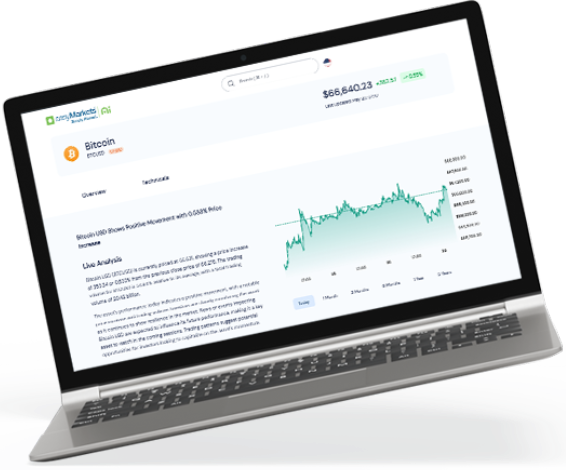Why Apple’s September keynote sent stock sliding

It’s the most wonderful time of the year for tech lovers. For them, Apple’s September Keynote feels like Christmas morning.
Indeed, at its September 9 Keynote this year, Apple unveiled bold innovations: from the new iPhone Air to the AirPod Pro 3’s real-time translation. On the surface, it looked like a showcase designed to capture attention and spark momentum.
Yet, the market told a different story.
Branded ‘Awe-Dropping’ by Apple itself, the event closed with the tech giant’s stock down 1.5%, followed by a 3.23% slide the next day. By September 11, the market showed signs of searching for direction, but a clear rebound had yet to appear.
Why did announcements of this scale trigger hesitation rather than enthusiasm? Truth is, it had more to do with trading psychology, rather than Apple’s products.
Let’s unpack the major emotional force behind Apple’s keynote, and the reaction that followed.
Navigating the market
Apple’s September Keynote has become the centrepiece of its launch calendar, the stage where the world expects technological revolutions.
Since 2011, when Apple shifted its iPhone reveals from summer, the event has steadily evolved into Apple’s most consequential showcase:
In 2014, Apple used it to unveil Apple Watch and Apple Pay, redefining wearables and payments.
In 2016, the AirPods were announced, transforming how we listen.
In 2017, the iPhone X introduced Face ID and edge-to-edge OLED, reshaping the smartphone blueprint.
These technological milestone reveals trained audiences, traders, and fans to treat September as Apple’s defining moment each year.
That legacy is why the 2025 Apple September Keynote was so highly anticipated, and why market reactions were primed from the moment Apple CEO Tim Cook walked on stage.
Apple’s September Keynote 2025 explained
This year’s Apple September Keynote carried the weight of history, and the burden of proving Apple could still surprise.
What Apple announced
On stage, Apple unveiled products that, for everyday users, carried the hallmarks of a blockbuster:
The new iPhone 17 Air was the first major redesign since the iPhone X, being thinner, lighter, and wrapped in titanium.
The AirPods Pro 3 introduced real-time language translation, the first move by a tech giant to bring instant cross-language communication to everyday earbuds.
The Apple Watch Series 11, with a new machine learning feature to flag high blood pressure risks.
Why investors shrugged
Yet, investors were less impressed.
The absence of a long-rumoured AI overhaul for Siri left many underwhelmed, especially in the heat of the AI race.
The entry-level iPhone 17 ($799), Apple Watch Series 11 ($399), and AirPods Pro 3 ($249) all kept their prices flat. Investors worried about shrinking margins in a high-cost climate shaped by tariffs, supply chain pressures, and global inflationary.
Premium iPhone prices moved higher, with the iPhone 17 Pro rising by $100 to $1,099. Apple highlighted camera upgrades (a 48-megapixel system with enhanced zoom and stabilization) and the faster A19 Pro chip. Investors questioned whether these refinements were enough to drive mass upgrades.
Storage upgrades also doubled in price, climbing from $100 to $200 per tier. That change promised higher average selling prices but raised concerns about consumer pushback in a cautious spending environment.
Stock impact

Apple’s September Keynote in 2025 left a clearly negative mark on those who trade Apple stock, with movement unfolding over the days that followed:
September 9: As Tim Cook left the stage on September 9, Apple’s September Keynote was followed by a pullback. The stock opened near $237 and closed at $234.35, down 1.5% by the end of the Apple September Keynote and regular trading hours.
September 10: The decline deepened, with shares sliding 3.23% to $226.79. This marked Apple’s steepest post-Keynote drop since 2017, when the iPhone 8 and iPhone X reveal triggered a 2.5% slide.
September 11: Pre-market data indicated stabilization, with Apple holding close to the prior close at $226.79. The stock was steady, but no rebound had yet materialised.
Mastering the behaviour
On the surface, the story looks simple: investors were underwhelmed, and the stock paid the price.
But beneath the price action is something deeper.
Traders, like all of us, rely on mental shortcuts to make sense of complex decisions under pressure. These shortcuts are known as Cognitive Biases. One of the most common is the Availability Heuristic: our tendency to overweigh whatever comes most easily to mind, usually the latest headlines or price moves.
Recency Bias is a specific form of this heuristic.
What is Recency Bias?
Recency Bias is when we overweigh what just happened and under weigh the wider history. In markets, that means trading off the latest headline or price move while ignoring long-term evidence.
In Apple’s case, attention fixated on the September keynote:
No Siri AI overhaul
Mixed pricing
Recency Bias in the case of Apple

Many traders treated those fresh negatives as if they defined Apple’s future, while sidelining the company’s long record of overcoming similar doubts.
Once questioned on whether customers would accept higher iPhone prices with the $999 iPhone X in 2017, Apple proved they would when the X became the best-selling model of its cycle and lifted average selling prices past $700.
Once dismissed as unable to grow services, Apple proved critics wrong by scaling App Store commissions (the 15%-30% cut it takes on paid apps, in-app purchases, and subscriptions) alongside iCloud storage, Apple Music, and newer offerings like Apple TV+ and Apple Pay, which steadily built recurring subscription revenue.
Service revenue climbed from $24 billion in 2016 to over $85 billion by 2023, turning recurring subscriptions into one of Apple’s most reliable growth engines.
Once criticized for locking users into a closed ecosystem (where hardware, software, and services only worked seamlessly within Apple’s own products), the company transformed that approach into a durable competitive advantage.
By enabling services like iMessage to sync across iPhone, iPad, and Mac, upgrading FaceTime with group calls and cross-platform links, and making AirDrop the default sharing method between devices, Apple built an ecosystem exceeding 1.8 billion active users worldwide, re-enforcing loyalty and recurring revenue streams.
RECENCY BIAS CASE STUDY: GameStop Short-Squeeze (2021)
Apple’s September Keynote in 2025 wasn’t the first time traders let the latest headlines cloud their judgment. A far more extreme case came in January 2021, when GameStop became the centre of one of the most dramatic short squeezes in market history.
Here, Recency Bias was on full display.
Traders ignored the company’s weakening fundamentals. Net sales had slipped from $9.5 billion in 2011 to just over $5 billion in 2020, and its reliance on physical stores was under strain from both the pandemic and the industry’s shift to digital downloads.
Instead, attention was entirely on the most immediate signals:
Viral posts and memes on Reddit’s r/WallStreetBets, which cast GameStop as a fan-favourite underdog.
An endorsement from Elon Musk via a one-word tweet (‘Gamestonk!’).
A sudden, almost straight-up spike in the stock’s price chart from $17 on January 4, to nearly $483 by January 28: a 2,700% surge.
This wasn’t rational analysis. It was Herd Mentality: a cognitive bias we explored in this same event in a previous Victory Vanguard edition.
On January 22 alone, nearly 197 million GameStop shares traded hands (almost 3 times more than the 70 million shares actually available) because short-sold shares kept being borrowed, sold, and re-sold in a loop
And just as quickly, momentum reversed when brokers like Robinhood (responsible for the sale of most GameStop shares at the time) restricted buying GameStop shares on January 28.
By February 2, GameStop had plunged to about $90 from its January 28 intraday peak of nearly $483, wiping out as much as 80% of value for latecomers who bought at the top.
Difference to Apple
The sell-offs in the GameStop short squeeze and Apple’s September Keynote were both driven by Recency Bias, but they played out in opposite directions.
In GameStop’s case, traders piled in on the back of hype. Recency Bias here meant chasing euphoria, mistaking short-term excitement for lasting value.
Apple’s stock, by contrast, dipped after its September keynote. Recency Bias here meant dumping strength, letting disappointment over a 72-minute event outweigh decades of performance.
The key difference? GameStop showed how Recency Bias can inflate a weak company into a frenzy, while Apple showed how it can deflate a strong company after a single event.
Conquering the cognitive
So how do you guard against the Recency Bias?
To break that cycle, it helps to learn from psychologist Gary Klein comes in. Klein has spent decades studying how people make decisions under pressure. Klein worked with firefighters, military commanders, and doctors: people whose choices often carried life-or-death stakes.
He noticed that even experts could be blindsided by the same mental shortcuts that trip up traders: overconfidence, tunnel vision, and Recency Bias.
In 2007, he distilled these lessons into Pre-Mortem Thinking.
What is Pre-Mortem Thinking?
For traders facing the temptation of Recency Bias, Klein’s method offers a structured way to pause, reset perspective, and make decisions that stand up beyond the next headline.
The idea is simple but powerful.
Instead of waiting for a plan to fail and asking ‘what went wrong?’, you imagine that failure has already happened, and then work backwards. This mental exercise forces traders and decision-makers to step outside the emotional pull of the moment.
By assuming failure in advance, the brain shifts gears:
It escapes the ‘now’, and considers longer-term patterns.
It weighs downside risks that headlines don’t make clear.
It exposes overconfidence/narrative-driven thinking before it hardens into action.
Had traders applied Pre-Mortem Thinking during the GameStop frenzy, many would have foreseen the risk of collapse once brokers like Robinhood restricted buying.
Winning wisdom wrap up
Recency Bias shrinks perspective.
It turns one keynote, one meme, or one price swing into the whole story, as if the latest moment defines the future. -GameStop showed it when hype alone sent a struggling stock into a frenzy.
The lesson?
You counter Recency Bias by stepping back.
Test the story against fundamentals, weigh longer-term patterns, and use tools like Pre-Mortem Thinking to spot risks before they play out.
When the noise fades, it’s the bigger picture that drives performance.
Final thoughts
So where does Apple stock stand now?

After the Keynote dip, Apple stock steadied, and climbed. By September 29, shares had rallied to $253.57: a gain of more than 10% in less than three weeks.
That means Apple not only recovered from the sell-off, but actually pushed higher than before the Keynote, when it opened near $237 on September 9. The move echoed a familiar ‘Buy the rumour, sell the news’ pattern. Hype fuelled the stock before the event, profit-taking hit as the news landed, and then fundamentals brought buyers back.
The lesson? Short-term narratives fade fast, but long-term strength endures. Trading psychology can exaggerate headlines, yet mastery is recognising when the story is already shifting back toward the bigger picture.
Disclaimer:
Please note that the information provided in this article was accurate at the time of writing. Market conditions and economic data can change rapidly. This content is intended for informational purposes only and should not be used as the sole basis for making financial decisions.

It’s the most wonderful time of the year for tech lovers. For them, Apple’s September Keynote feels like Christmas morning.
Indeed, at its September 9 Keynote this year, Apple unveiled bold innovations: from the new iPhone Air to the AirPod Pro 3’s real-time translation. On the surface, it looked like a showcase designed to capture attention and spark momentum.
Yet, the market told a different story.
Branded ‘Awe-Dropping’ by Apple itself, the event closed with the tech giant’s stock down 1.5%, followed by a 3.23% slide the next day. By September 11, the market showed signs of searching for direction, but a clear rebound had yet to appear.
Why did announcements of this scale trigger hesitation rather than enthusiasm? Truth is, it had more to do with trading psychology, rather than Apple’s products.
Let’s unpack the major emotional force behind Apple’s keynote, and the reaction that followed.


























